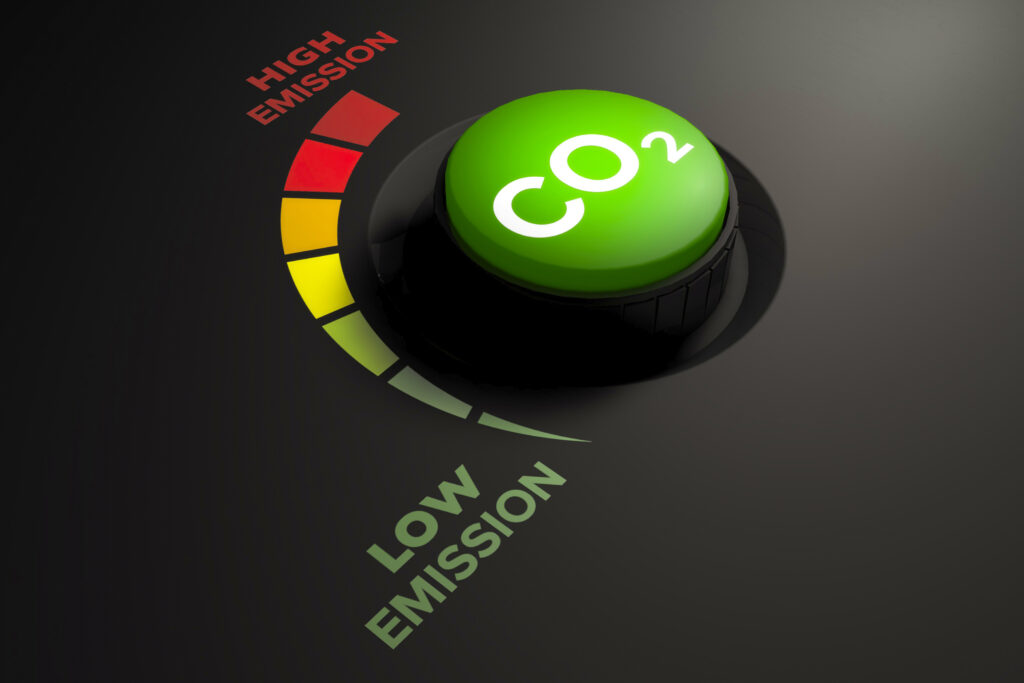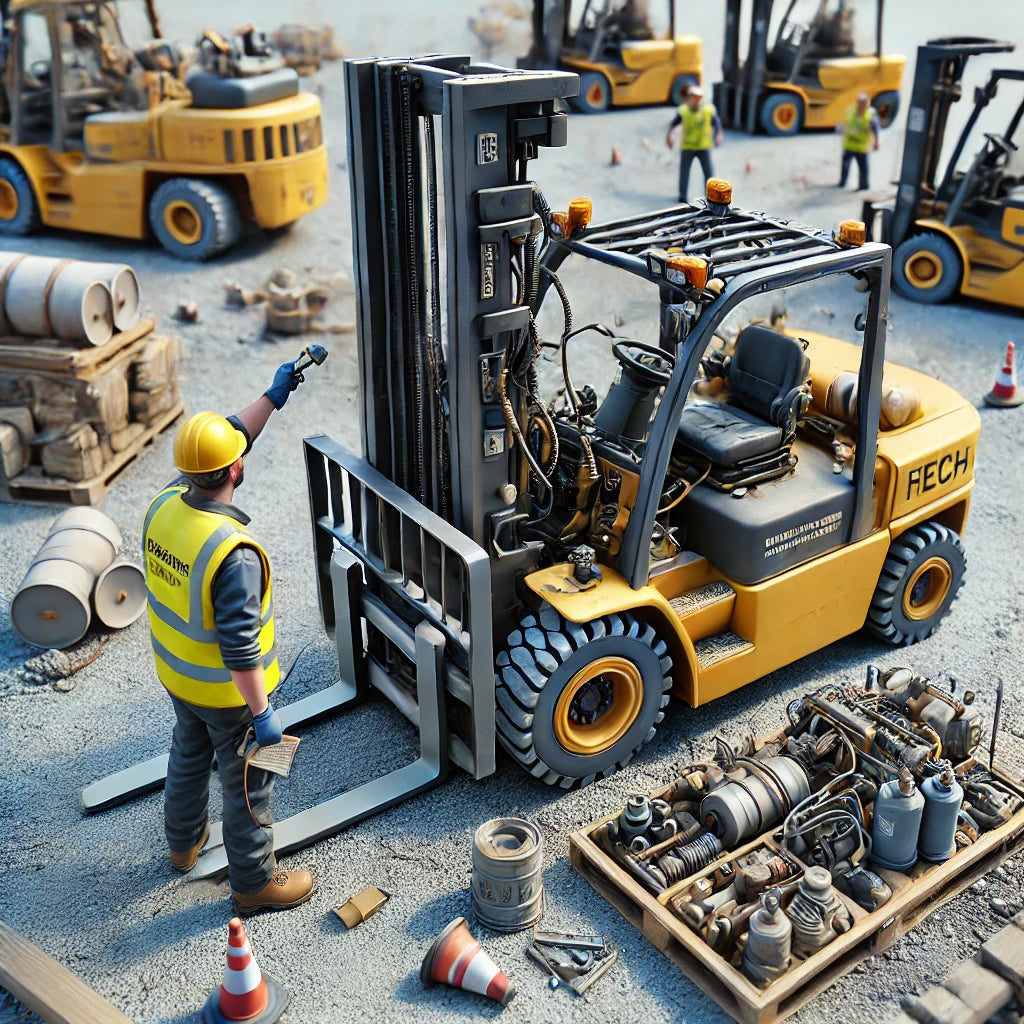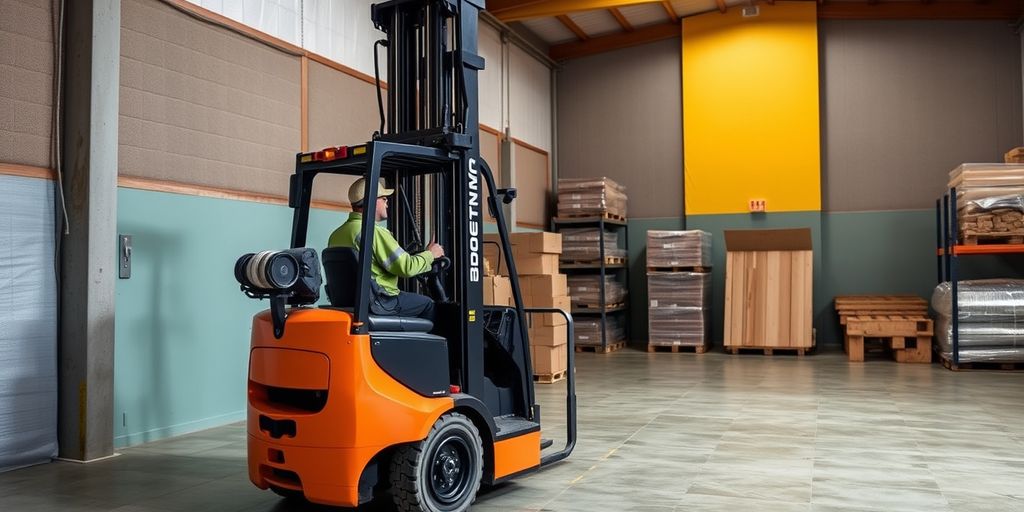In today’s environmentally conscious world, businesses across all industries are under pressure to reduce their carbon footprint and comply with stringent emissions regulations. For those in the material handling and logistics sectors, forklifts are a significant focus of these regulatory efforts. Forklifts, particularly those powered by internal combustion engines (ICEs), contribute to emissions that can impact both the environment and worker health. Understanding and navigating forklift emissions regulations is crucial for staying compliant, avoiding penalties, and contributing to a cleaner, safer workplace.
The Importance of Forklift Emissions Regulations
Forklift emissions regulations are designed to limit the release of harmful pollutants into the atmosphere, including carbon monoxide (CO), nitrogen oxides (NOx), hydrocarbons (HC), and particulate matter (PM). These pollutants can have serious environmental and health impacts, contributing to air quality degradation, respiratory issues, and other health problems in workers who operate or work near forklifts. Regulatory bodies like the Environmental Protection Agency (EPA) in the United States, as well as state-level agencies like the California Air Resources Board (CARB), have established emissions standards that forklifts must meet. These regulations not only help protect the environment but also ensure a safer and healthier work environment by reducing exposure to harmful emissions.
Key Regulatory Bodies and Standards
Understanding the key regulatory bodies and the standards they set is essential for compliance. The primary organizations involved are the Environmental Protection Agency (EPA), the California Air Resources Board (CARB), and the Occupational Safety and Health Administration (OSHA).
The EPA sets emissions standards for non-road engines, including those used in forklifts, through a series of regulations known as Tier 1 through Tier 4. Each successive tier represents stricter standards, with Tier 4 being the most recent and stringent. Compliance with these standards often requires advanced engine technologies, such as diesel particulate filters (DPFs) and selective catalytic reduction (SCR) systems.
CARB, known for its stringent emissions standards, often exceeding those set by the EPA, focuses on reducing emissions from a variety of sources, including forklifts. Businesses operating in California must comply with CARB’s rules, which may include requirements for retrofitting older forklifts or transitioning to zero-emission models.
OSHA primarily focuses on workplace safety but also has regulations that intersect with emissions standards. OSHA mandates that indoor air quality must not expose workers to harmful levels of pollutants, which can be a concern in facilities using internal combustion forklifts. Compliance with OSHA standards often requires businesses to monitor and control emissions from forklifts to ensure a safe working environment.
Challenges of Compliance
Navigating forklift emissions regulations can be challenging, particularly for businesses with large fleets or those operating in states with stricter standards like California. The main challenges include the cost of compliance, operational disruptions, and staying informed about regulatory changes.
Complying with emissions regulations often requires significant financial investment, including upgrading or retrofitting existing forklifts, purchasing new forklifts that meet the latest standards, or transitioning to electric models. While these investments can lead to long-term savings through improved efficiency and reduced fuel costs, the upfront expense can be substantial. Implementing new emissions control technologies or replacing older forklifts can lead to operational disruptions, as retrofitting or replacing forklifts may require downtime, impacting productivity. Businesses must carefully plan these changes to minimize disruptions to their operations.
Emissions regulations are subject to change, with new standards being introduced and existing ones being updated. Keeping up with these changes is essential for maintaining compliance, but it can be difficult to stay informed about the latest requirements, particularly for businesses operating in multiple states, each with its own set of regulations.
Strategies for Compliance
Despite the challenges, several strategies can help businesses ensure compliance with forklift emissions regulations while maintaining operational efficiency.
The first step toward compliance is to assess your current forklift fleet. Determine the emissions standards that each forklift meets and identify those that do not comply with the latest regulations. Conduct emissions testing on your forklifts to determine their current emissions levels, helping you prioritize which forklifts need to be upgraded, retrofitted, or replaced.
For businesses with older forklifts, retrofitting may be a cost-effective option to meet emissions standards. Retrofitting involves installing emissions control devices, such as diesel particulate filters (DPFs) or catalytic converters, to reduce the emissions produced by the engine. While retrofitting can be effective, consider the cost and potential impact on performance, as some retrofits may reduce engine power or increase maintenance requirements.
If retrofitting is not feasible, investing in new forklifts that meet the latest emissions standards may be the best option. New forklifts, particularly those that comply with Tier 4 or CARB standards, are designed with advanced emissions control technologies that reduce pollutants while maintaining high levels of performance. One of the most effective ways to eliminate emissions is to transition to electric forklifts. Electric forklifts produce zero emissions at the point of use, making them ideal for indoor operations and businesses committed to sustainability. Hybrid forklifts, which combine internal combustion engines with electric power, offer a balance between reduced emissions and extended range.
Regular maintenance is key to ensuring that your forklifts continue to meet emissions standards over time. Establish a regular maintenance schedule that includes routine checks of the engine, exhaust system, filters, and other critical components. Consider implementing emissions monitoring as part of your maintenance routine, regularly testing and recording emissions levels to help identify problems early and take corrective action before a forklift falls out of compliance.
Staying informed about regulatory changes is essential for maintaining compliance. Subscribe to industry newsletters or alerts from regulatory bodies to receive updates on new requirements. If your business operates in multiple states or has a large forklift fleet, consulting with compliance experts may be beneficial. These professionals can help you navigate the complexities of emissions regulations and develop a strategy that meets all applicable requirements.
For businesses committed to sustainability, carbon offsetting can be an additional strategy to reduce the environmental impact of forklift operations. Carbon offsets involve investing in projects that reduce or capture greenhouse gas emissions, such as reforestation, renewable energy, or methane capture. Many organizations offer the ability to purchase carbon offsets based on your emissions levels, helping to balance out the emissions produced by your forklift fleet. Alternatively, you can invest directly in sustainable projects that reduce emissions, such as installing solar panels on your facility.
Conclusion
Navigating forklift emissions regulations can be challenging, but it is essential for maintaining compliance, protecting worker health, and contributing to a cleaner environment. By understanding the key regulatory bodies and standards, assessing your current fleet, considering retrofitting or investing in new forklifts, implementing regular maintenance, staying informed about regulatory changes, and exploring carbon offsetting, your business can successfully meet emissions requirements while maintaining operational efficiency.
In the long run, compliance with emissions regulations not only helps avoid penalties but also positions your business as a responsible and forward-thinking organization committed to sustainability. As regulations continue to evolve, staying proactive and informed will be key to ensuring that your forklift operations remain efficient, compliant, and environmentally friendly.




Leave a comment
This site is protected by hCaptcha and the hCaptcha Privacy Policy and Terms of Service apply.